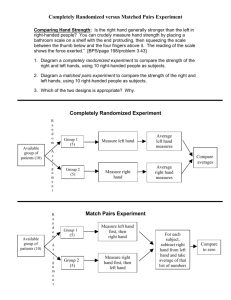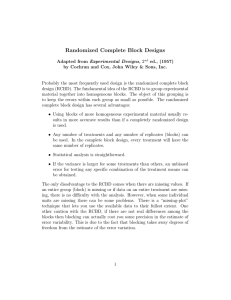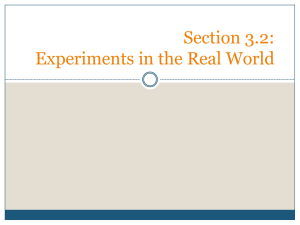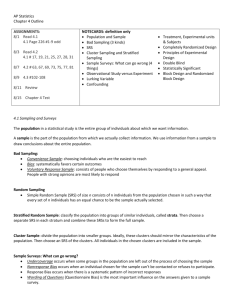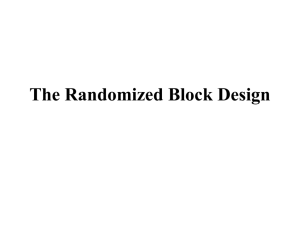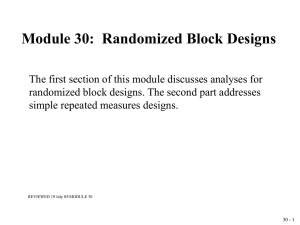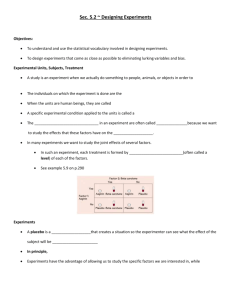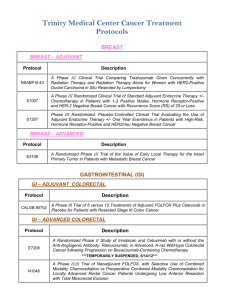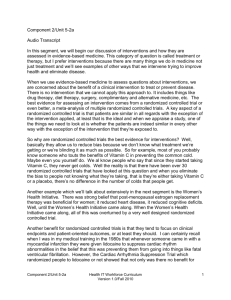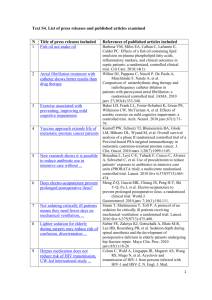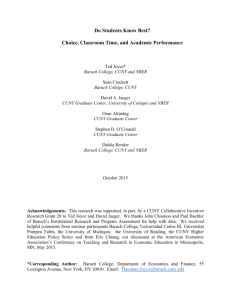4.4 Reading Guide
advertisement
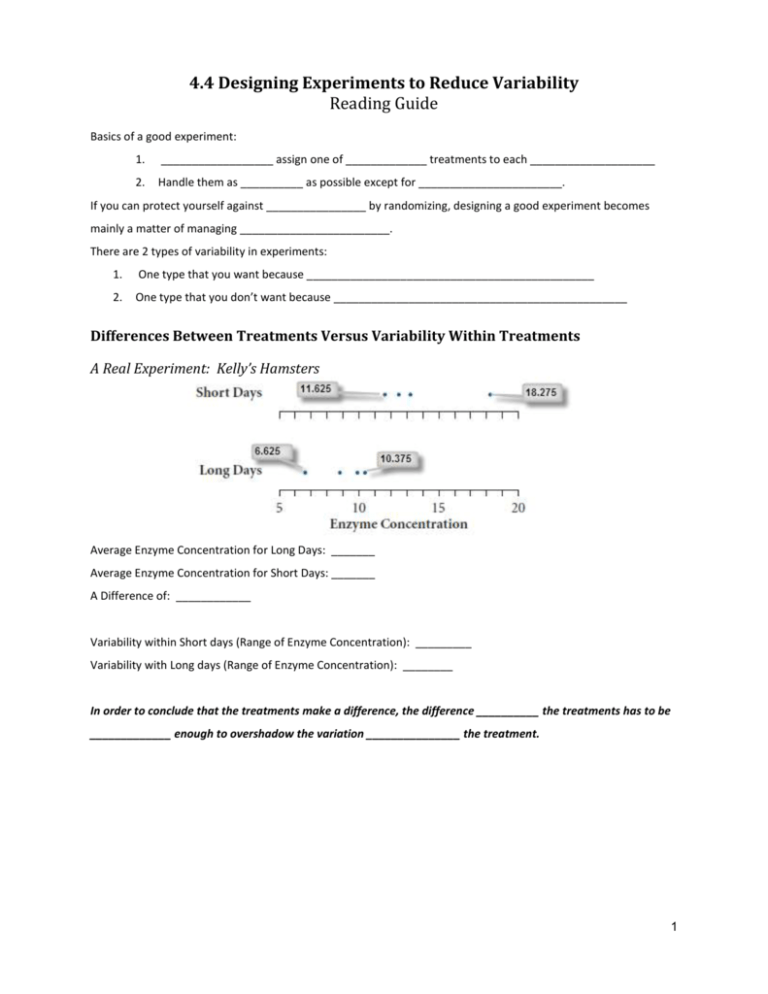
4.4 Designing Experiments to Reduce Variability Reading Guide Basics of a good experiment: 1. __________________ assign one of _____________ treatments to each ____________________ 2. Handle them as __________ as possible except for _______________________. If you can protect yourself against ________________ by randomizing, designing a good experiment becomes mainly a matter of managing ________________________. There are 2 types of variability in experiments: 1. One type that you want because ______________________________________________ 2. One type that you don’t want because _______________________________________________ Differences Between Treatments Versus Variability Within Treatments A Real Experiment: Kelly’s Hamsters Average Enzyme Concentration for Long Days: _______ Average Enzyme Concentration for Short Days: _______ A Difference of: ____________ Variability within Short days (Range of Enzyme Concentration): _________ Variability with Long days (Range of Enzyme Concentration): ________ In order to conclude that the treatments make a difference, the difference __________ the treatments has to be _____________ enough to overshadow the variation _______________ the treatment. 1 A Design for Every Purpose -- Activity 4.4a – Sit or Stand (will do in class) – fill in later Part A – Completely Randomized Design -- Results Side-by-Side Stemplots Mean of Sitting Data: __________ Mean of Standing Data: ________ SD of Sitting Data: ________ SD of Standing Data: _________ Part B – Randomized Paired Comparison(Matched Pairs) -- Results Difference = Standing-Sitting Stemplot of Difference Mean of Difference (Standing-Sitting): __________ SD of Difference: ________ Part C – Randomized Paired Comparison(Repeated Measures) -- Results Difference = Standing-Sitting Stemplot of Difference Mean of Difference (Standing-Sitting): __________ SD of Difference: ________ 2 Completely Randomized Design In a completely randomized design, treatments are _____________________ to _______ without restriction. Use a __________________________ to randomly assign a treatment to each experimental unit. Steps in Creating a Completely Randomized Design (CRD) 1. 2. The Randomized Paired Comparison Design ______________________ and ________________________ are examples of randomized paired comparison designs. Steps in Creating a Completely Randomized Paired Comparison (Matched Pairs) Design 1. 2. In experiments of this type, the matched units or the individual units that receive all treatments in random order are called __________________. The Randomized Block Design A randomized paired comparison design is a special type of _____________________________________. The difference is that in a generalized block design more than _________________________________ may be in each block. Steps in Creating a Randomized Block Design 1. 2. 3 The effectiveness of blocking depends on _______________________________________ and how ___________________________________________________. The more _____________ the units within a block, the ______________________ the blocking will be. 4
